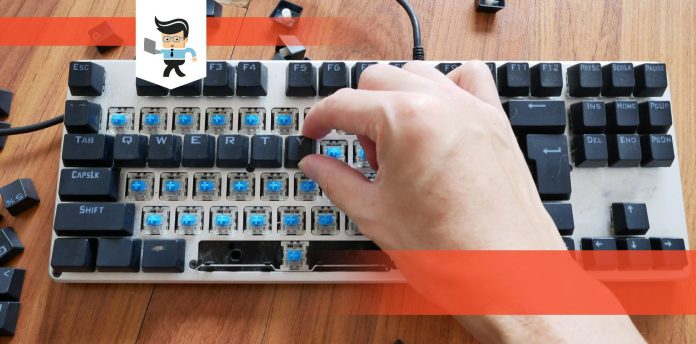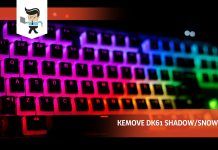If there is a Vortexgear mechanical keyboard that deserves our attention today, it is none other than the Vortex Race 3. The reason is simple.
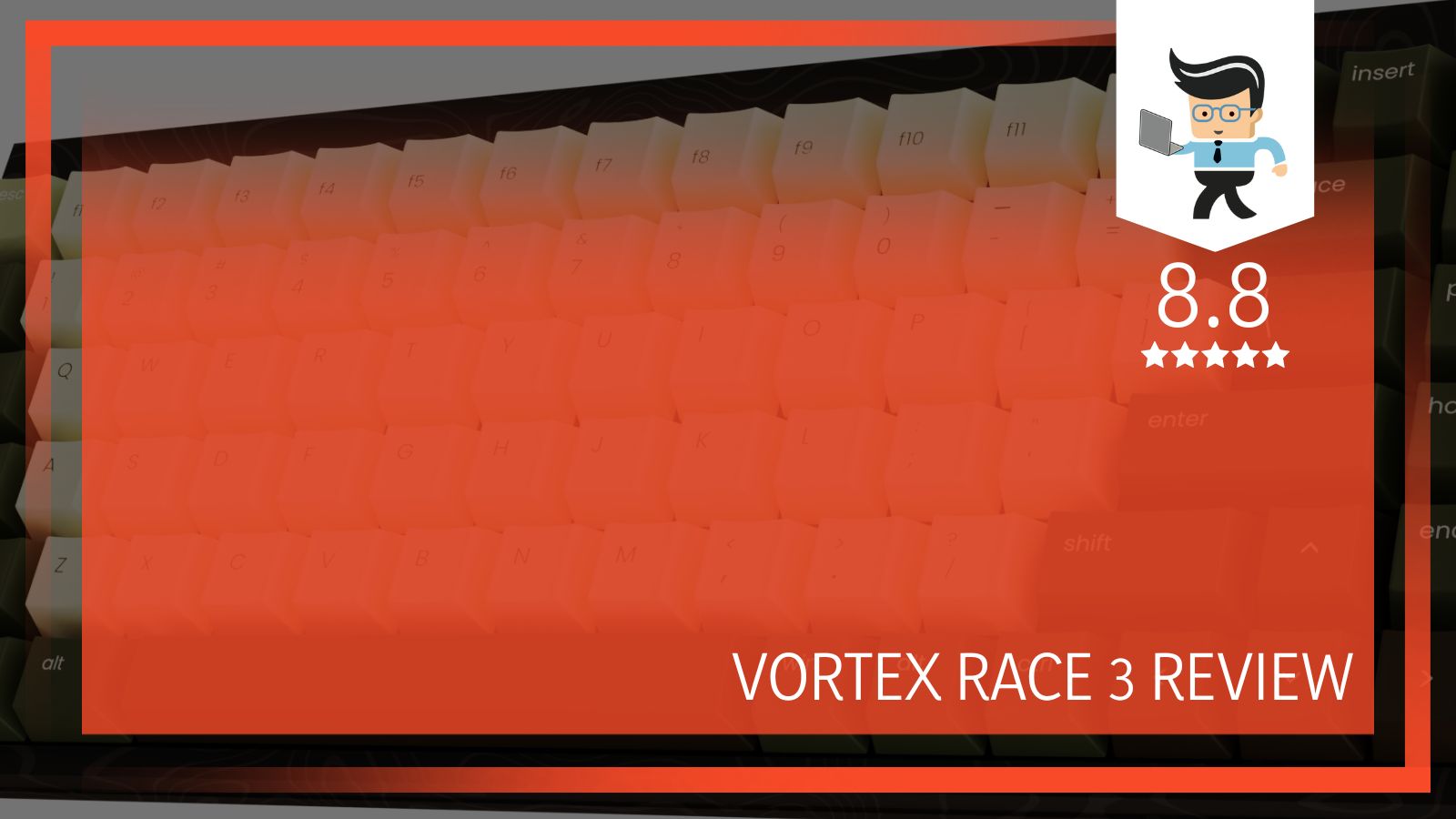 There is a lot of misinformation on the importance of mechanical keyboards, as many users still consider them a thing of the past, but no. Good things never die.
There is a lot of misinformation on the importance of mechanical keyboards, as many users still consider them a thing of the past, but no. Good things never die.
As we continue, we will shed more light on the best features of this mechanical keyboard, detailing its unique features, compact size, and layout.

Contents
Vortex Race 3 Review – Unboxing the Vortex Race 3
Looking for the real definition of a simple, yet premium product, then you’ve got to see this Vortex Race 3 mechanical keyboard.
Until recently, mechanical keyboards were the object of admiration only by individual writers and famous programmers. Built entirely with different mechanisms under each key, the technology is as old as the appearance of the keyboard itself.
However, thanks to the advent of modern mechanical keyboards like the Race 3 from Vortexgear, people are beginning to adopt them more than ever before. They offer top-class reliability, durability, and top functionality.
Straight out of the box, we can see the brand’s logo on a shiny but discreet surface at the bottom right, just like on the underside of the box.
If you think exterior packaging is impressive, wait until you get to unwrap the package. Aside from foam cutout support for the Vortex Race 3 keyboard, there’s also a bubble wrap that helps to preserve the keyboard from popping out.
The box opens on the side like a drawer. We then come face to face with the keyboard comfortably installed in its case. There is a notch above the keyboard which allows you to quickly lift and extract it from its case.
Moreover, the thick backplate helps to reduce the resonance effect in the case. The quality of manufacture and the exposure of the switches clearly help, on the one hand, to better contain the emitted noise, and on the other, to allow the sound to escape through the sides and to escape better, unlike what could happen with a closed case of poor quality. This makes the use of MX Blue more pleasant.
Now Let’s Go to the Other Parts of the Keyboard
-
Build Quality
As soon as we take it out of its box, the first thing that strikes us is the build quality. The case is entirely in plain aluminum, allowing the Cherry MX switches to be proudly displayed. When we pay attention to the keys, we immediately notice by that they are in PBT and that the profile used changes radically from what we find most commonly.
Usually, PBT keys are smoother and thicker than ABS keys. This explains their ability to contain the noise emitted by the keys when typing, especially when you press them fully.
Even with the pads installed under the Vortex, you can see that the top of the keyboard barely exceeds the height of the Ducky’s first row of keys.
Under the keyboard, we have four small round rubber pads for grip on the desk. The keyboard can be elevated by attaching two legs (provided in the bundle), depending on your tilt preferences. An almost flat keyboard can indeed be confusing, especially when one is used to mechanical keyboards.
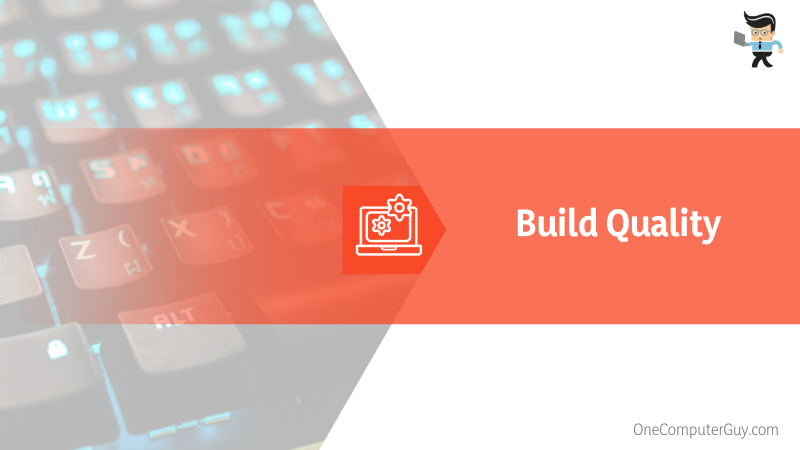
The keyboard offers a USB connection only, via a detachable cable supplied in micro-USB. The cable connects on the left at the back to a wholly exposed port, which starts at the level of the box. You are then free to change it for a fancy cable of several colors if you feel like it.
The keyboard has a black steel backplate to protect the switches and the PCB, undoubtedly the most beautiful effect.
The icing on the cake: Vortex delivers a colorful set of keys to highlight individual keys and give your keyboard an original and vintage style. For Mac owners, there are also suitable keys.
Interestingly, there are just a few accessories available. It comes with a detachable micro-USB/USB cable, screw feet, and a set of buttons in retro RGBY colors.
-
Switches
The Race 3 programmable keyboard has a sensitive click at the height of the activation towards the middle of the unit, thus making it possible to know when the key has been activated or not.
Even if the activation force requires a pressure of 45 cN, it will take a little more to activate the button because of the resistance located at this level.
The main disadvantage of these switches is that they are “clicky,” as they emit a little metallic noise whenever you reach the activation level.
The switch is a matter of strictly personal taste, and Vortex offers its keyboard with almost all existing Cherry MX switches: the linear Red, Black, and Silver, as well as the Brown and Clear touchscreens.
-
Keycap Quality
The Vortex Race 3 keycaps are always in the SP DSA format, a flat form that is exempt from row formats, with centered lettering printed by Dye-Sublimation technology
Note that the arrangement of some keys remains “proprietary.” This is particularly the case with the Esc and Del keys. Both keys come with a dimension of 1.5U instead of 1, which will complicate the task a bit if you ever want to opt for a personal keyset.
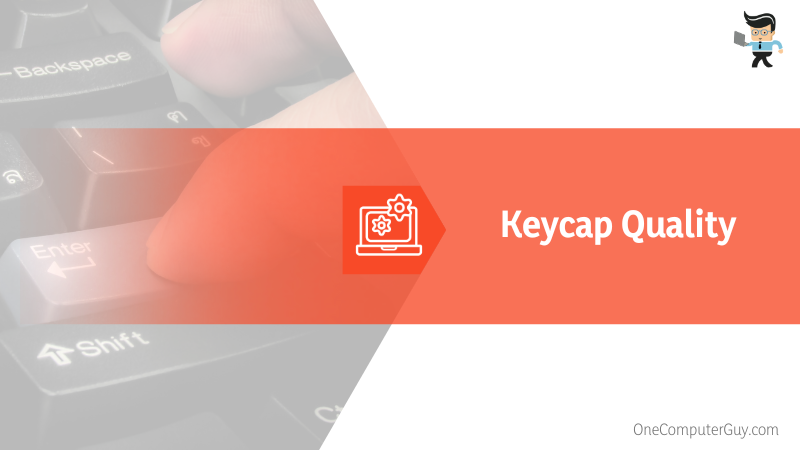
The same goes for the right Shift key, which measures 1.75U instead of 2.25U. Similarly, the Alt Gr, Fn, and Right Ctrl keys are in 1U format instead of 1.5.
At the back, the keyboard has an anodized aluminum box and a VortexGear plate with less jovial finishes, which really isn’t essential.
-
LEDs
The Vortex Race 3 RGB backlighting dispenses entirely with software.
To start with, you will need to access the different options with the Pn key. There are several available: off, constant, breathing, raindrops, activation, etc.
It is even possible to measure the level of blue, red, and green lighting yourself to find, as closely as possible, the color that suits you best.
Finally, the intensity and speed of the effects are also configurable. Still, it’s not particularly automatic and requires a bit of your time to customize the backlight. Fortunately, it will only take a few minutes before you master how they work.
-
Spillproofing
The choice of the SP DSA profile may, in the first few times of use, seem uncomfortable to those who have already acquired their habits on sculpted silhouettes (OEM, Cherry, etc.).
It feels like you have to go further with your fingers to reach the keys on their top, despite their flat profile. It’s just a matter of getting used to it in a few hours of use, just as it was the first time you used a mechanical keyboard.
The layout of the keys will also require a little adaptation time compared to a TKL format, in particular with the location of the directional keys (Page Up/Down, Home, End, Del). Still, laptop PC users will know how to navigate without any problem considering the similarities between the two.
-
Macros & Fn layer
Vortex has gone the extra mile to offer its keyboard in ISO FR format. This will come in handy for users looking to get a quality mechanical keyboard that does not come with the SO US format.
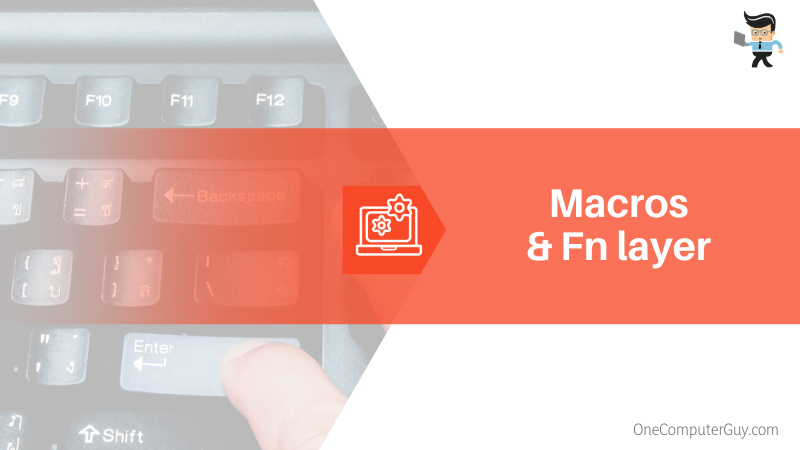
In terms of functionality, with the Fn (“Function”) key, the F1 to F6 keys have multimedia controls.
• The secondary function of the F10 key is to enable screen capture while F11 corresponds to “Scroll Lock (ScrLk).”
• The Delete key takes on the “Insert” function.
• The Origin (or “Home”) key allows you to switch from AZERTY to QWERTY.
• The PGPR and PgSv keys are used to switch to Colemak and Dvorak layouts.
• A green or red LED lights up under the right part of the Space key to indicate if your plan is in Colemak or Dvorak.
• Also, the “Fn” key is used to lock the Windows key. The user receives a prompt whenever this function is activated accidentally.
• A blue LED under the space bar will indicate whether the Windows key is locked or not.
• The combination of keys Fn + R allows you to reset the key-codes if you have had fun creating your personal macros with full knowledge of the facts.
-
Labels & Branding
Unfortunately, the Vortex Race 3 keyboard doesn’t have a Vortex logo included on the rim of the case. However, the elegant laser-etched aluminum label beneath the keyboard is a very good consolation.
The keyboard itself has not changed at all. We, therefore, find this same thick box in anodized aluminum, with very finely rounded contours and excellent finishes.
The switches remain exposed, and we always notice the presence of a black steel backplate between the switches and the PCB. Under the box, there are four non-slip pads and the two locations for additional screw-in risers.
It comes with two self-screwing elevator pads, a detachable USB cable, and two sets of additional keys. These keys allow you to connect seamlessly with Mac OS and enable the RGBY backlighting without any hassle.
The use of various materials allows a suitable containment of noise pollution, even on a noisy switch of nature like the MX Blue is. Vortex offers a very extensive variety of switches to sit on your little or big fingers.
The possibility of using the keyboard in a local layout is a real plus, which is rare among very specialized manufacturers. After that, it plays a big part in the vintage side, and you can’t have it all.

Conclusion
With a manufacturing quality primarily up to the sum to pay, Vortex Race 3 comes with great features for everyone, especially in terms of on-the-fly changes to the layout.
The SP DSA profile of the keys offers very appreciable comfort. It is very consistent with the 75% format, giving a compact appearance. The use of PBT on the keys is a real plus when it comes to durability and comfort under the fingers.
Overall, the Vortex Race 3 keyboard is a decent buy. As a 75% keyboard, it perfectly represents Vortex’s idea, which is primarily based on providing the most value in a compact body. It provides you with almost all the features of a ten-keyless board, albeit in a portable, sleeker body.
With its well-built structure, users can utilize it with any kind of Operating System, with regard to numerous switches. Typing explicitly on this masterpiece has never been any better, and it is sure to interest even gamers and programmers.
However, the keyboard comes without a driver. If you want to create your macros, you will have to make use of the universal software.

